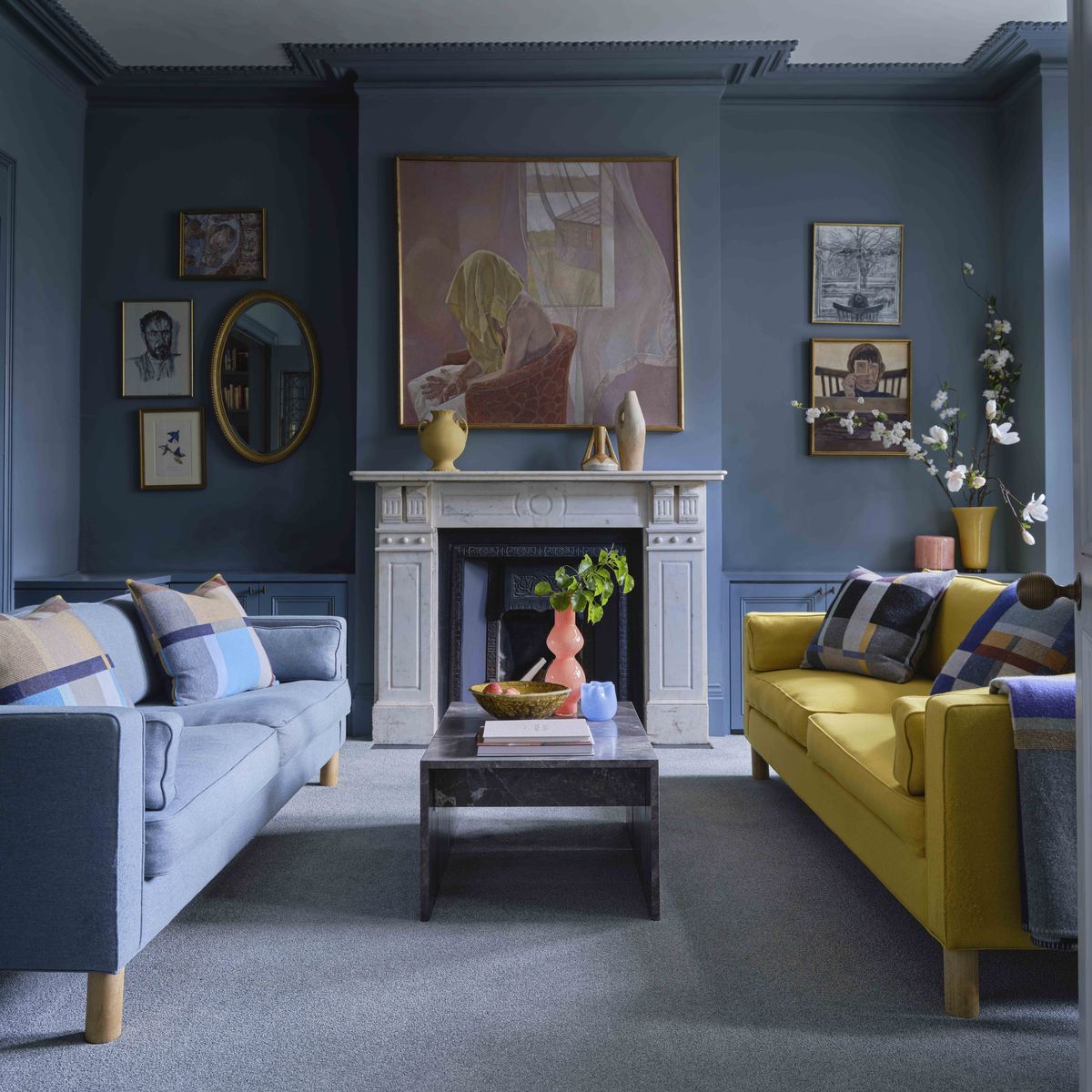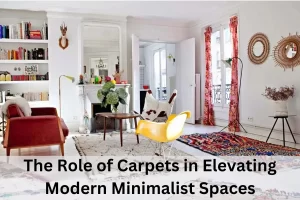Imagine stepping into your carefully curated living room, where soft hues and elegant furnishings create an atmosphere of comfort and sophistication. The centerpiece of the room, your exquisite carpet, ties the entire space together with its intricate patterns and sumptuous texture. However, as time goes by, you start noticing those pesky impressions left by your furniture – an unintended consequence of everyday living that can mar the beauty of your carpets.
Carpets are more than just floor coverings; they’re investments in your home’s aesthetics and ambiance. The last thing you want is for heavy furniture to leave a lasting mark on these valuable pieces. That’s where the magic of coasters and pads comes into play. These unassuming protectors are your carpets’ best friends, offering a shield against the weight and pressure that can lead to unsightly dents.
Understanding the Problem: Furniture Dents on Carpets
Furniture dents on carpets are impressions or depressions that form when heavy furniture places concentrated pressure on the carpet fibers. These dents are a result of the compression and flattening of the carpet pile, which occurs over time due to the weight of the furniture.
When furniture is placed on a carpeted surface, especially if the furniture has small legs or a narrow base, the weight of the item becomes focused on a smaller area. This increased pressure causes the carpet fibers to be pushed down and compacted, creating visible indentations. Over weeks or months of consistent pressure, these depressions become more pronounced and can even become semi-permanent fixtures on the carpet.
The occurrence of furniture dents is influenced by various factors, including the weight of the furniture, the shape and size of its legs, and the type of carpet pile. Carpets with shorter and denser fibers are more prone to dents. Regularly rearranging furniture or using protective measures like coasters and pads can help minimize the likelihood of these unsightly dents and extend the life of your carpets.
Certain types of furniture are more likely to cause dents on carpets due to their weight distribution and design. Heavy items such as solid wood or metal furniture can exert substantial pressure on the carpet fibers, leading to noticeable indentations over time. Additionally, furniture with small legs or narrow bases concentrates the weight onto a smaller surface area, intensifying the pressure and increasing the likelihood of dents.
Chairs, tables, sofas, and cabinets are common culprits, especially if they lack proper padding or coasters. Furniture with sharp edges or uneven legs can also contribute to the formation of dents, as they create more concentrated pressure points on the carpet. Moreover, items that are frequently moved or dragged across the carpet, such as dining chairs or office chairs, can accelerate the denting process. Being mindful of the types of furniture you place on your carpets and taking preventative measures can go a long way in preserving the carpet’s pristine appearance and texture.
Choosing the Right Coasters and Pads – Some Tips
Material Compatibility: Choose coasters and pads made from materials that are gentle on your carpet, such as felt or rubber, to avoid potential damage.
Size and Shape: Opt for coasters and pads that match the size and shape of your furniture legs or base. This ensures even weight distribution and protection.
Weight Capacity: Check the weight capacity of the coasters and pads to ensure they can adequately support your furniture without compressing the carpet.
Carpet Type: For high-pile carpets, thicker pads can help distribute weight better, while thinner pads are suitable for low-pile carpets to avoid altering the furniture’s stability.
Adhesive vs. Non-Adhesive: Consider whether you prefer adhesive pads that stick to furniture legs or non-adhesive ones that stay in place due to friction.
Durability: Look for durable materials that can withstand frequent furniture movement and weight without wearing down quickly.
Noise Reduction: If noise is a concern, choose coasters and pads with noise-reducing properties, such as rubber or cork.
Easy Installation: Opt for coasters and pads that are easy to install and stay securely in place to provide consistent protection.
Aesthetics: Select coasters and pads that complement your furniture’s design and color scheme, maintaining both functionality and aesthetics.
Multi-Purpose: Consider multi-purpose coasters and pads that offer both dent protection and help slide furniture more easily.
Customizable Options: Some coasters or pads can be trimmed to fit specific furniture legs, providing a tailored fit for various pieces.
Consult Professionals: If unsure, consult carpet or furniture experts for recommendations on the best coasters and pads for your specific needs, ensuring your carpets remain dent-free and well-preserved.
Proper Placement and Installation
Protecting your carpets from furniture dents is a simple yet effective task that begins with the proper installation of coasters and pads. Follow these steps for hassle-free installation:
Clean the Area: Ensure the furniture legs and the carpet surface are clean and free of dust or debris before installing the coasters or pads.
Measure and Align: Measure the diameter or width of the furniture legs or base. Center the coaster or pad on the leg’s contact point, aligning it for balanced weight distribution.
Peel and Stick (Adhesive Pads): If using adhesive pads, peel off the protective backing to expose the adhesive side. Press firmly onto the furniture leg, ensuring it adheres securely.
Slide or Attach (Non-Adhesive Pads): For non-adhesive pads, simply slide or place the pad under the furniture leg. Some pads might have straps, clips, or attachments for a snug fit.
Repeat for All Furniture: Repeat the process for each furniture leg, making sure each coaster or pad is correctly positioned.
Check Stability: Gently test the stability of the furniture to ensure the coasters or pads are securely in place and the furniture remains level.
Rearrange if Needed: If the furniture wobbles or feels unsteady, adjust the positioning of the coasters or pads until the furniture sits evenly.
Regularly Inspect: Periodically inspect the coasters and pads to ensure they haven’t shifted or worn down over time.
Adjust as Necessary: If you rearrange your furniture, lift each piece slightly and adjust the coasters or pads to match the new layout.
DIY Coasters and Creative Solutions
Upcycled Fabric Pads: Use old fabric scraps or denim to create soft, custom-sized pads that add a rustic charm to your furniture while safeguarding your carpets.
Nature-Inspired Cork Coasters: Cut circular or geometric shapes from cork sheets and embellish them with pressed flowers, leaves, or elegant patterns for a nature-inspired vibe.
Tile Marvels: Decorate plain ceramic tiles with intricate designs using acrylic paints, stencils, or decoupage techniques, offering a chic and sturdy coaster option.
Leather Elegance: Cut leather into coasters and stamp or paint them with intricate motifs, providing a touch of elegance to your furniture protection.
Felted Wool Delights: Craft cozy coasters by needle-felting wool fibers into unique patterns or animal shapes, adding a whimsical touch to your living space.
Geometric Wooden Coasters: Cut wooden pieces into geometric shapes, paint them with bold colors or intricate designs, and seal with a protective finish for a modern twist.
Vintage Vinyl Coasters: Repurpose old vinyl records by cutting them into coaster-sized circles, creating a nostalgic conversation starter while safeguarding your carpets.
Tiled Mosaics: Arrange small, colorful tiles onto a coaster-sized base, creating mosaic patterns that double as functional art pieces.
Stamped Clay Coasters: Roll out air-dry clay, stamp it with your favorite designs, and let it harden to craft charming and textured coasters.
Woven Yarn Coasters: Experiment with different yarn colors and weaving patterns to create intricately woven coasters that add a cozy touch to your furniture.
Troubleshooting and Maintenance
Ice It Out: For fresh dents, place an ice cube on the dent and let it melt overnight. Gently fluff the fibers with your fingers the next day.
Steam Revival: Hold a steam iron a few inches above the dent, allowing the steam to penetrate the fibers. Gently use your fingers or a soft brush to lift the fibers back up.
Blow-Drying Method: Use a blow dryer on a low heat setting to warm the fibers, then coax them back to their original position with your fingers.
Damp Cloth Trick: Dampen a clean cloth, wring out excess water, and place it over the dent. Use a steam iron on the cloth for a minute, followed by gentle fluffing.
Vinegar Solution: Mix equal parts of water and white vinegar, dampen a cloth with the solution, and blot the dent. Use a hairdryer on low heat to fluff the fibers.
Carpet Brushing: Gently brush the area with a soft-bristle carpet brush to lift the compressed fibers and encourage them to regain their shape.
Furniture Rotation: Periodically rotate furniture to redistribute weight and minimize the appearance of dents in high-traffic areas.
Carpet Rake: Use a carpet rake to lift and separate the fibers, reducing the visibility of dents and restoring the carpet’s plushness.
Professional Steam Cleaning: Consider hiring a professional steam cleaning service to refresh your carpets and help alleviate the appearance of dents.
Patience and Time: In some cases, minor dents may naturally disappear over time as the carpet fibers recover their original shape. Be patient and allow your carpet to bounce back.
Conclusion
In the grand tapestry of your home, carpets play a significant role in setting the stage for comfort and style. By taking proactive steps to prevent furniture dents using coasters and pads, you’re investing in the longevity of your carpets and the overall aesthetic of your living space. The journey we’ve embarked upon has unveiled the science behind dents, the art of selecting protective accessories, and the craft of troubleshooting unwanted marks. As you bid farewell to the frustration of unsightly impressions, you welcome a future where your carpets remain an exquisite canvas of luxury, resilience, and enduring beauty. With each careful placement of a coaster or pad, you’re weaving a story of care and attention that will continue to unfold beneath your feet.






